





Swimming is one of the most demanding and rewarding sports out there. It builds full-body strength, challenges cardiovascular endurance, and develops discipline. But if you think all your progress happens in the pool, think again.
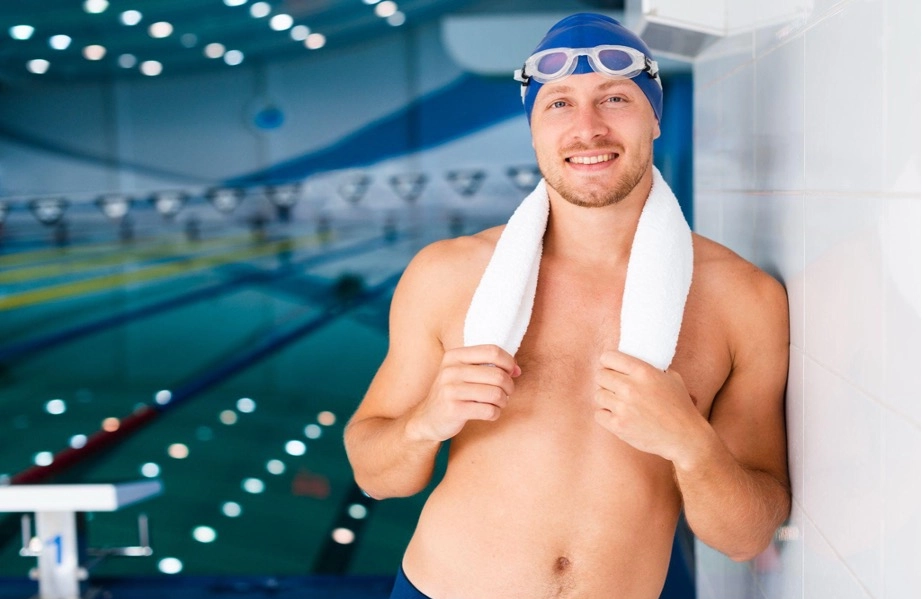
If you really want to step up as a swimmer, dryland workouts are a must. At Aqua Artist Swimming School, we believe the best swimmers train both in and out of the water. That’s why we’ve put together this blog to explain the importance of dryland training to swimming and introduce you to 20 powerful dryland exercises that can help swimmers of all levels improve.
The 5 Core Benefits of Dryland Training - From stronger starts to better posture, we explain how dryland workouts improve every aspect of your swim performance.
20 Detailed Dryland Exercises - Get step-by-step breakdowns of warm-ups, core, upper and lower body moves, and full-body exercises, all tailored for swimmers.
How Each Workout Helps You in the Pool - We link every exercise to the specific swimming skill it improves, like streamlining, kicking power, or stroke control.
Easy-to-Follow Cool Down Routine - Don’t skip recovery! We share simple stretches that help your body stay flexible and injury-free after training.
Expert Insights from Aqua Artist Coaches - Learn how our training programmes blend pool and land exercises to help swimmers of all ages and skill levels improve faster.
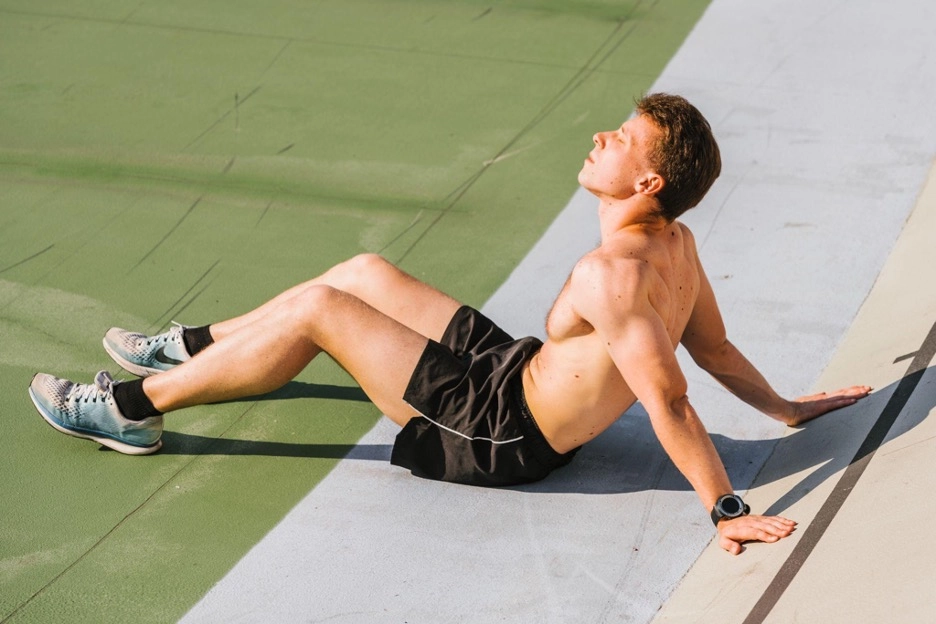
Before jumping into exercises, it helps to understand the role dryland training plays in swimming. Dryland workouts are exercises done outside the pool to improve strength. When done right, they directly improve your performance in the water. Here’s How:
Swimming relies on resistance, meaning the water pushes back, and you have to push harder. Dryland workouts help swimmers develop muscle strength that converts into more powerful strokes, better starts, and faster turns. Movements like push-ups, squats, and resistance band work train key muscle groups like your shoulders, legs, and core, making you more explosive in the pool.
Your core isn’t just your abs. It includes your lower back, obliques, and hips, all essential for maintaining a streamlined position in the water. Dryland core workouts help you stay aligned, reduce drag, and maintain better body control throughout your swim.
Overuse injuries are common in swimming, especially in the shoulders. Dryland training strengthens smaller stabilising muscles and corrects muscular imbalances. This leads to better joint stability and less risk of injury. Since many swimming strokes build muscle in specific areas, dryland exercises help balance this development and reduce strain.
Stretching and mobility work are often missed, but they are essential too. Flexible shoulders, ankles, and hips help you move more efficiently through the water. Dryland stretching routines help you reach farther, kick stronger, and turn smoother.
Let’s not forget the mental side of things. While swimming can give your brain a boost, dryland training for swimming can be challenging and push your limits in new ways. Whether it’s a difficult circuit or holding a plank longer than you thought possible, these sessions help you build the resilience needed for race day.
Here are 20 swimmer-approved dryland exercises, grouped into warm-up, core, upper body, lower body, and full-body movements. These can be done at home, in the gym, or as part of your swimming training program.
1. Arm Circles:
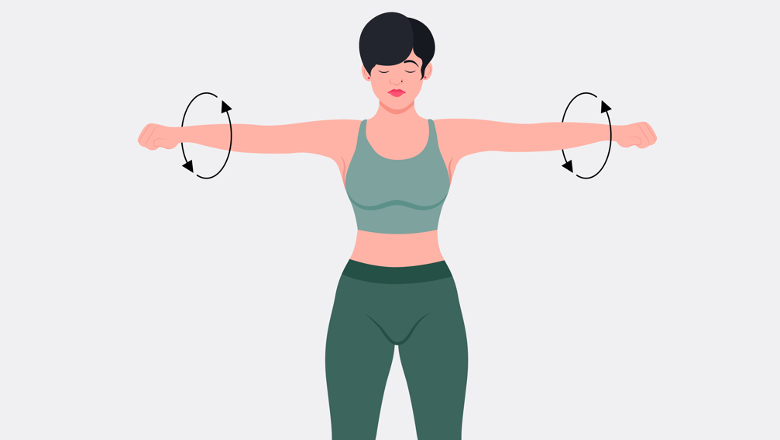
Stand tall with your arms extended out to your sides. Slowly rotate them forward in small circles for 10 reps, then reverse. This warms up the shoulder joints and muscles, which are heavily used in swimming.
2. Leg Swings
Hold onto a wall or chair for balance. Swing one leg forward and back, then side to side. Do 10 reps in each direction per leg. It improves hip mobility and prepares the legs for movement.
3. Jumping Jacks
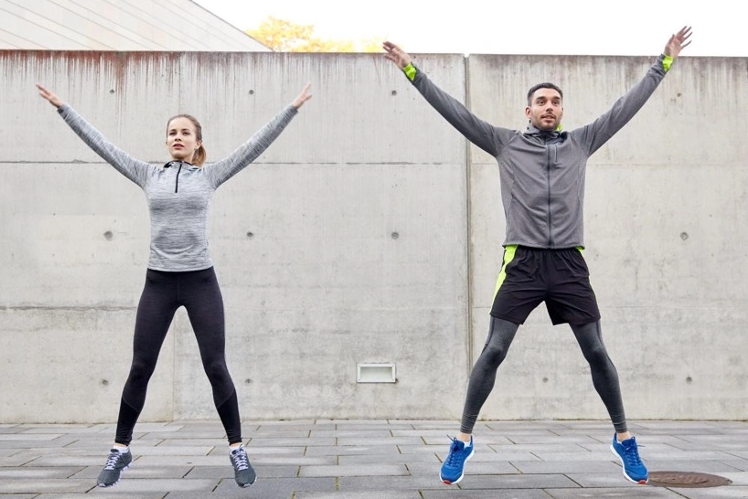
Do continuous jumping jacks for 30 seconds. This gets the heart rate up and engages the whole body. It’s a great way to activate both the cardiovascular system and muscles.
4. Hip Bridges
Lie on your back with knees bent and feet flat. Lift your hips off the ground and squeeze your glutes at the top. Hold for a second and lower. This activates the glutes and strengthens the posterior chain.
5. Cat-Cow Tilts
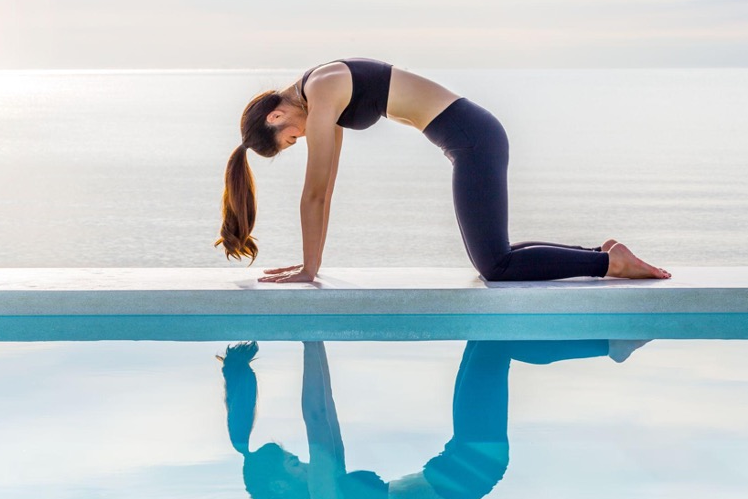
On your hands and knees, arch your back towards the ceiling (cat) and then dip it toward the floor while lifting your chest (cow). Repeat for 30 seconds. This mobilises the spine and warms up the core and back.
6. Front Plank
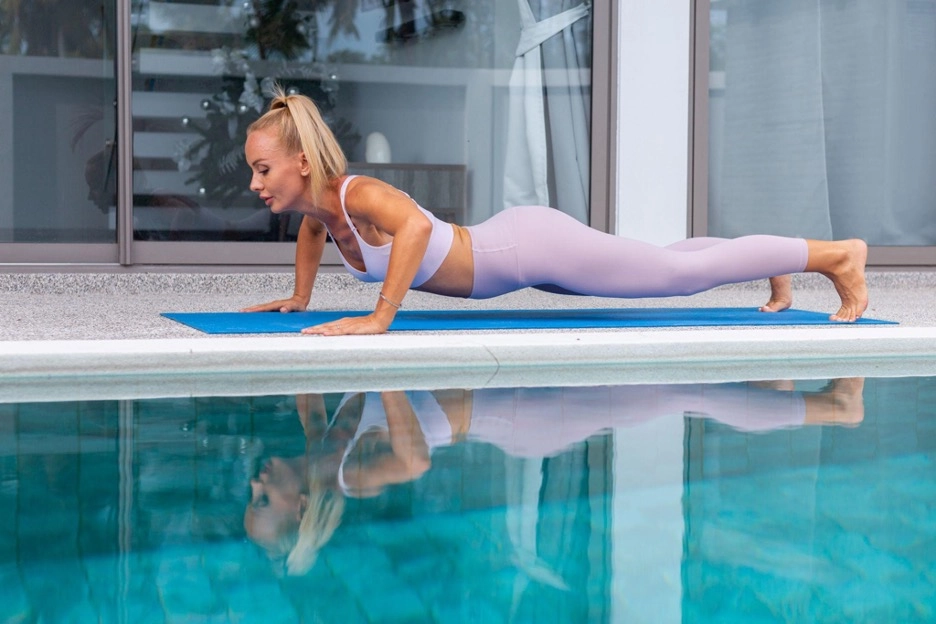
Put your forearms and toes on the ground, keeping your body in a straight line. Tighten your abs and hold for 30 seconds. Planks build endurance and stability in the core. This helps you to control your body in the water.
7. Side Plank
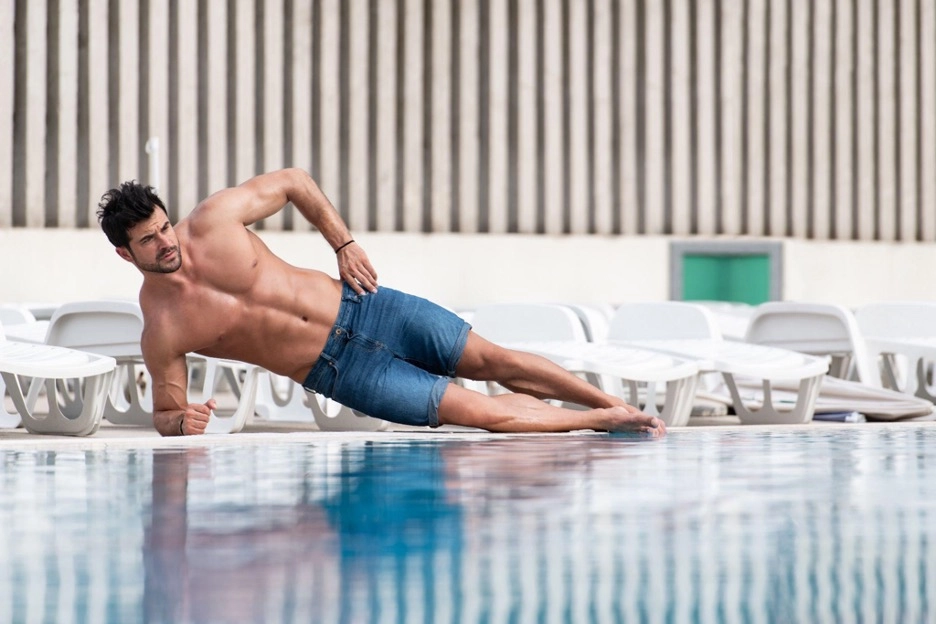
Put your forearms and toes on the ground, keeping your body in a straight line. Tighten your abs and hold for 30 seconds. Planks build endurance and stability in the core. This helps you to control your body in the water.
8. Russian Twists
Sit on the floor with knees bent and feet off the ground. Twist your torso to each side, tapping the floor. Do 20 reps. It improves your rotational core strength for mastering freestyle strokes and butterfly strokes.
9. Flutter Kicks
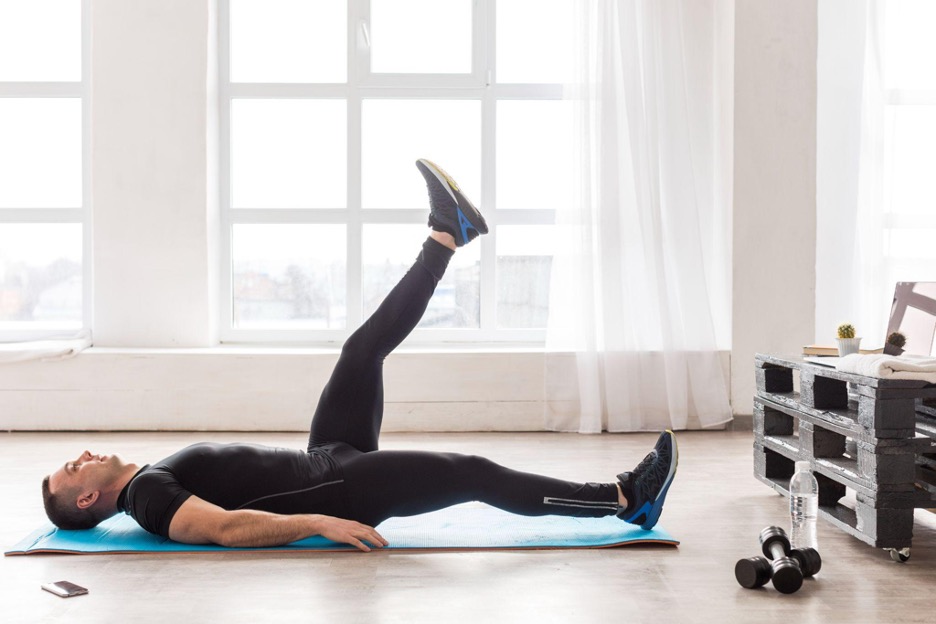
Lie on your back, hands under your glutes. Lift your legs a few inches and alternate quick, small kicks for 30 seconds. This mimics the swim kick and strengthens the hip flexors and lower abs.
10. Superman Holds
Lie face down and lift your arms and legs off the ground. Hold like this for 30 seconds. This targets the lower back and glute muscles, which help maintain a strong streamline in the water.
11. Push-Ups
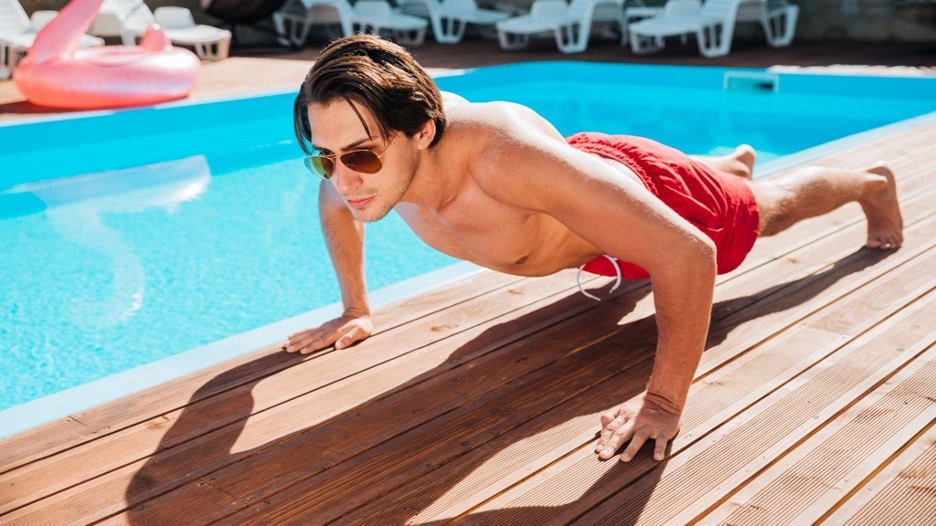
Place your hands slightly wider than shoulder-width. Lower your body until your chest nearly touches the floor, then push back up. Do 15 reps. Push-ups develop arm, shoulder, and chest strength you need for pulling strokes.
12. Chair Dips
Sit on the edge of a chair with your hands gripping the edge. Move your hips off the chair and lower your body by bending your elbows, then push up. Do 15 reps. This strengthens the triceps for those power strokes.
13. Resistance Band Pull-Aparts
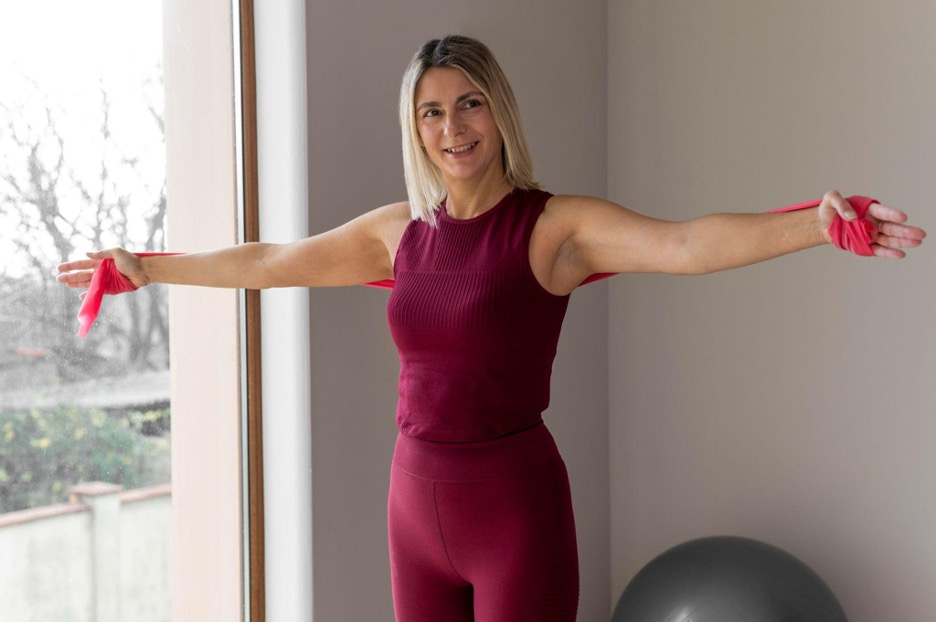
Hold a resistance band at shoulder height with arms straight. Pull the band apart by squeezing your shoulder blades together. Do 20 reps. This improves posture and shoulder health.
14. Medicine Ball Slams
Lift a medicine ball overhead and slam it to the ground with force. Catch it on the rebound and repeat for 10 reps. It builds upper body power and speed, simulating explosive swim starts that you may need in competitive swimming.
15. Bodyweight Squats
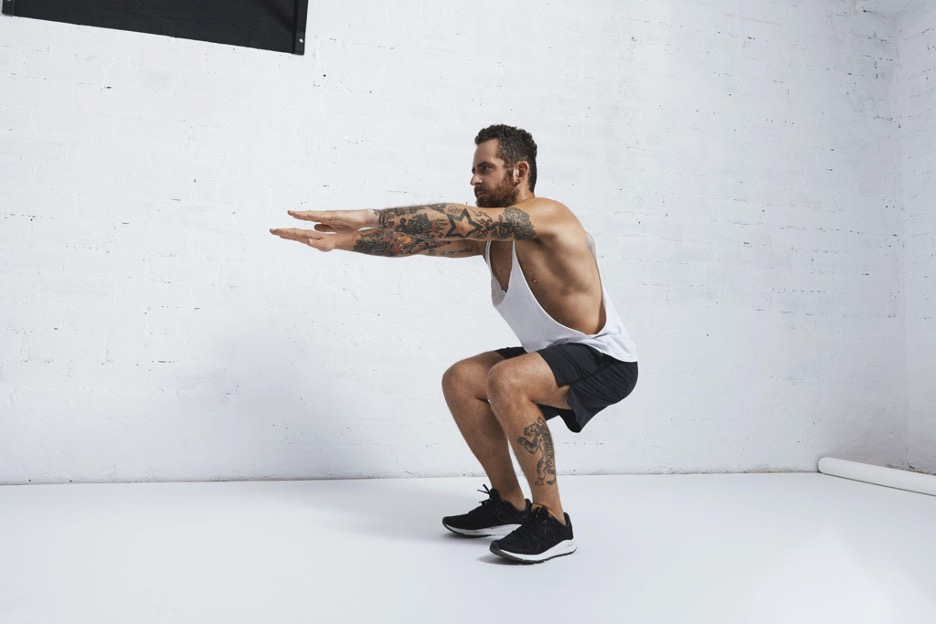
Stand with feet shoulder-width apart. Lower into a squat, keeping your chest up and knees tracking over your toes. Stand back up. Do 20 reps. Squats strengthen quads, glutes, and improve your overall lower body power.
16. Lunges
Step forward with one leg and lower your hips until both knees are at 90 degrees. Push back to start. Do 10 reps per leg. Lunges build single-leg strength and balance.
17. Jump Squats
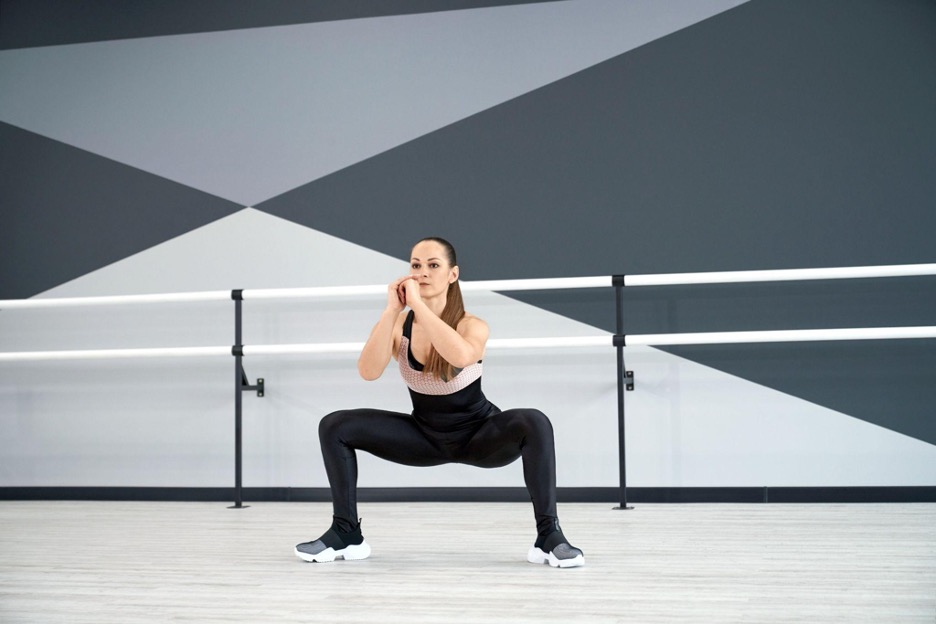
Perform a regular squat, then jump explosively and land softly. Do 15 reps. Jump squats increase your leg power and simulate the push-off from the wall or dive starts.
18. Calf Raises
Stand tall and lift your heels off the ground, then slowly lower. Do 20 reps. Strong calves help with better propulsion during kicks.
19. Burpees
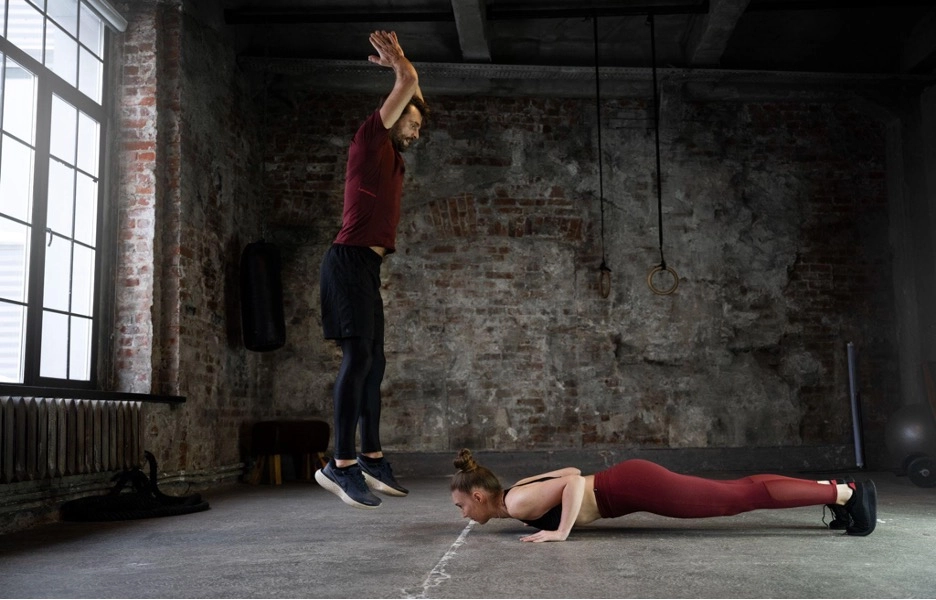
From standing, drop into a squat, kick back into a plank, perform a push-up, return to squat, and jump up. Do 10 reps. It’s a challenging workout, but that’s totally worth it! In fact, burpees develop total body strength, cardio, and coordination.
20. Mountain Climbers
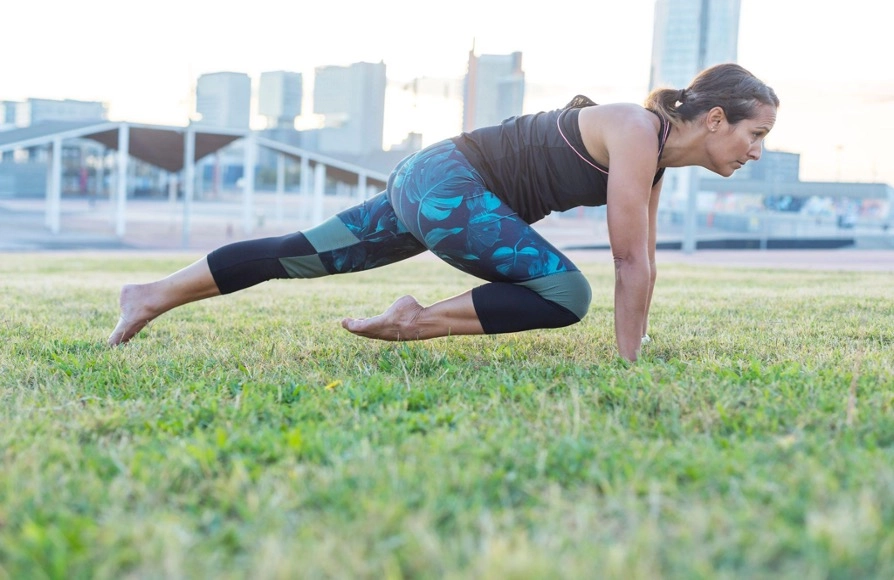
In a push-up position, drive your knees toward your chest one at a time at a quick pace. Do it for 30 seconds. Mountain climbers work your core, legs, and shoulders while improving cardiovascular endurance.

After the hard work, don’t skip the cool down.
Hamstring Stretch: Sit with one leg extended and reach for your toes. Hold 30 seconds per leg. This loosens tight hamstrings.
Quadriceps Stretch: Stand and pull your foot to your glutes. Hold 30 seconds per leg. This eases thigh tightness.
Shoulder Stretch: Pull one arm across your chest. Hold 30 seconds per arm. It reduces your shoulder tension.
Child’s Pose: Kneel and stretch your arms forward with your forehead on the ground. Hold for 1 minute. This relaxes the spine and shoulders.
Remember, dryland training for swimming doesn’t have to be complicated. Start with 2-3 sessions per week, stay consistent, and track your progress by coordinating with your swimming trainers. You’ll be amazed at the difference it makes in the water.
At Aqua Artist, we go beyond swim drills. We focus on building complete swimmers, strong in the water and stronger outside of it. Our dryland training programme is tailored to swimmers of all ages and abilities, led by experienced coaches who understand how land and water training work together.
Whether you're a beginner or an advanced swimmer, our swimming classes help you increase speed and power, reduce injury risk and gain confidence in your training routine.
It’s time to train smarter. Contact us today to book your free swim assessment. Let’s build your best swim season yet!